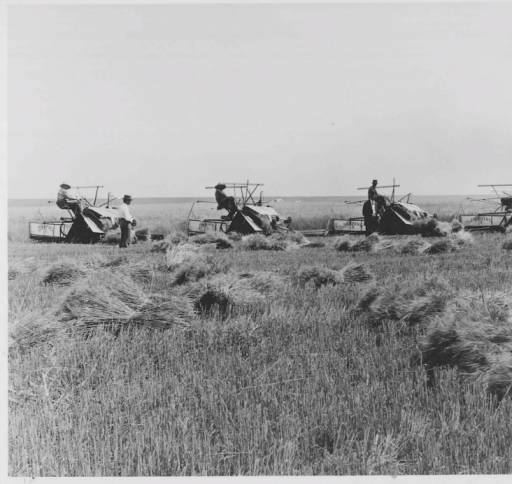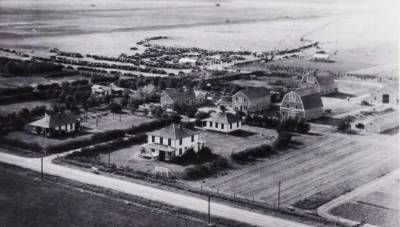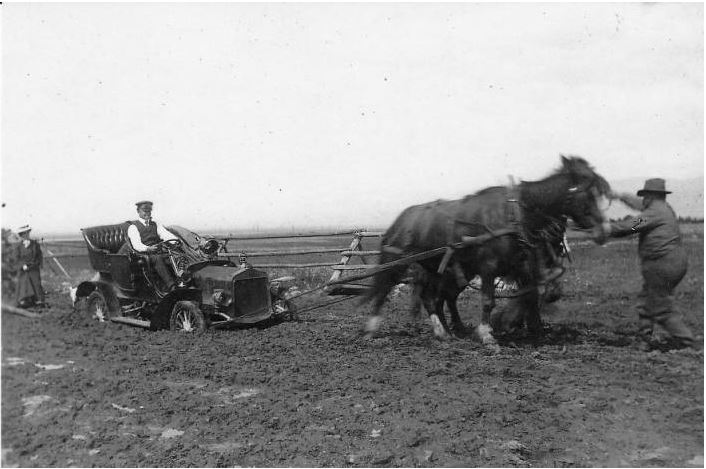Our Story
..."if it will survive in Moccasin, it will survive anywhere in the Northern Plains."
The Judith Basin area was a summer resort and favorite hunting ground for the Blackfoot, Nez Perce, Gros Ventre and Crow tribes about 100 years before the Lewis and Clark expedition. Mining camps were the first settlements in the area when silver and lead were discovered in the Little Belt Mountains in the 1870's and 1880's.
Livestock was also important during this era, and cattlemen moved large herds from western Montana valleys to graze on the abundant grassland. Large ranch holdings were subdivided into 160 and 320 acres tracts, which brought in homesteaders who established dryland farming and ranching practices.

The Central Agricultural Research Center was established in 1907 when Governor J.K. Toole signed House Bill No. 450 authorizing
the Montana Agricultural Experiment Station to establish its first branch station
in the Judith Basin. From 1907 - 1926 it was called the Judith Basin Substation; 1927
- 1944, the Judith Basin Branch Station; and 1945 - 1970, the Central Montana Branch
Station. In 1971 the name changed to the present Central Agricultural Research Center.

CARC's location on the plains of central Montana was considered ideal for testing
grains, trees and cultural practices because it was commonly believed that "if it
will survive in Moccasin, it will survive anywhere in the Northern Plains." Today,
CARC tests grains, forages and oil-seed crops and conducts research on cropping systems,
weed control and soil fertility.
Our forage production projects include "clipping studies" that simulate the amount of forage growth that would occur under various grazing frequencies under dryland conditions. Currently, 480 acres at CARC are farmed. The remaining land consists of range, roadways, shelter belts, railroad, creek bottom and headquarters area.
Over the years thousands of plots have been seeded and harvested to test varieties, study diseases, insects, weeds, cropping and tillage systems, fertilizers and forages. These trials have helped mold agricultural practices in central Montana. Listed below are some "firsts" achieved by researchers at the Center:
| 1907 | First sod broken on 80 acres |
| 1908 | Dryland crop rotations began, including summer fallow, continuous cropping, green
manure, row cropping and tillage practices. First winter wheat seeded and yields ranged from 35 to 55 bu/a the next year. |
| 1908 | A two-story, eight room station building was built, seven rooms with one office |
| 1909 | First corn planted. Although the growing season was too short to harvest the grain, researchers found the forage yield was higher than any other crop. |
| 1912 | First alfalfa variety trials began. First shelter belt planted. First caraganas planted in Montana and the first or second in the United States. |
| 1913 | First dynamite trials were conducted to determine if grain yields could be increased by loosening the sub-soil. After four years, no differences in yield were found. |
| 1914 | First fertilizer studies began using rock phosphate on wheat, oats and barley. |
| 1915 |
|
| 1922 | Dryland gardening trial started without much success. Grasshoppers first became a problem. Two tons of poisoned bran was spread to control |
| 1923 | First pasture trials began using hogs and milk cows. |
| 1924 | Experimental orchard established. Caragana and Russian olive ornamentals were found to be well adapted to Montana |
| 1926 | Soil blew in from neighboring fields covering research plots to a depth of 6"-8". |
| 1927 | First herbicide trials began with Canada thistle and quackgrass. |
| 1932 | Yogo, one of Montana's first winter hardy winter wheats, was released after testing in central Montana. This variety along with research conducted at the Center during the 1920's which led to development of the first furrow drill, helped move Montana's winter wheat belt northward about 300 miles |
| 1936 | To date, this was the driest year on record at Havre and Moccasin. 7.61" rainfall in growing season and the average rainfall was 10.95". |
| 1946 | First Montana trials of 2,4-D herbicide began. |
| 1957 | Golden Anniversary, 50 years of agriculture research. The attendance was nearly 4,000 people with 1,075 automobiles. |
| 1960 | An alternative row seeding configuration was created using perennial grasses and legumes. |
| 1970 | The first chemical fallow trials were conducted. The chemical Glyphosate was created. |
| 1980 | Specifically designed no-till drills were created to use in thick standing stubble. |
| 1990 | Haybet barley was first released. |
| 2000 | Began evaluating fall seeded Winter Pulse. |
| 2007 | Celebrating 100 years of agriculture research. |
|
2018 |
Planted our first Hemp variety trial. |
| Superintendents | Years |
| Pat Carr | 2016- present |
| David Wichman | 1990-2016 |
| Grant Jackson | 1984-1990 |
| Arthur L. Dubbs | 1958-1984 |
| James L. Krall | 1955-1958 |
| Ralph W. Williams | 1937-1955 |
| Joe L. Sutherland | 1936-1937 |
| John E. Norton | 1930-1936 |
| Irving J. Jensen | 1926-1930 |
| Albert Osenburg | 1920-1926 |
| P.V. Cardon | 1918-1920 |
| John M. Stephans | 1907-1918 |



